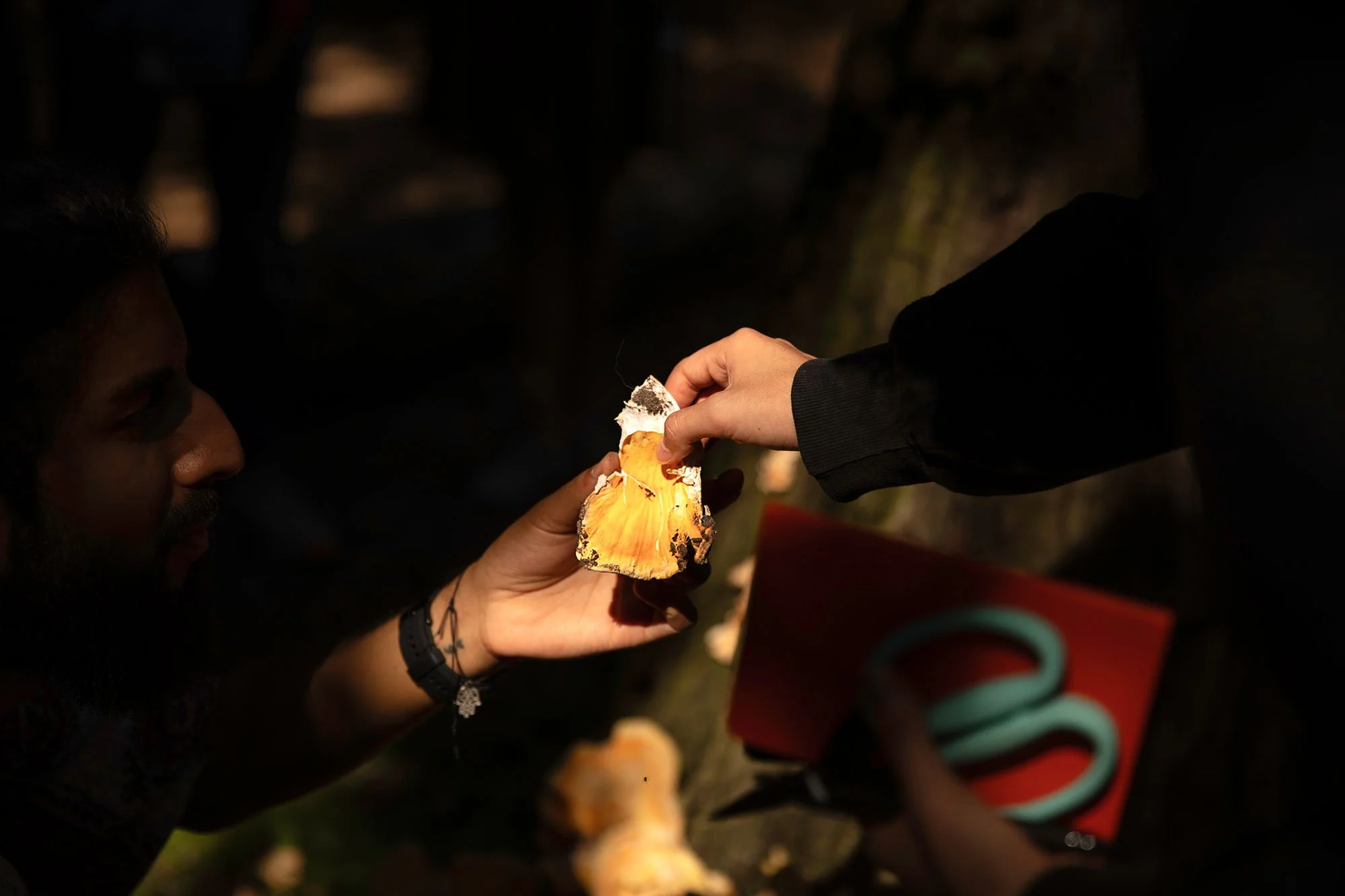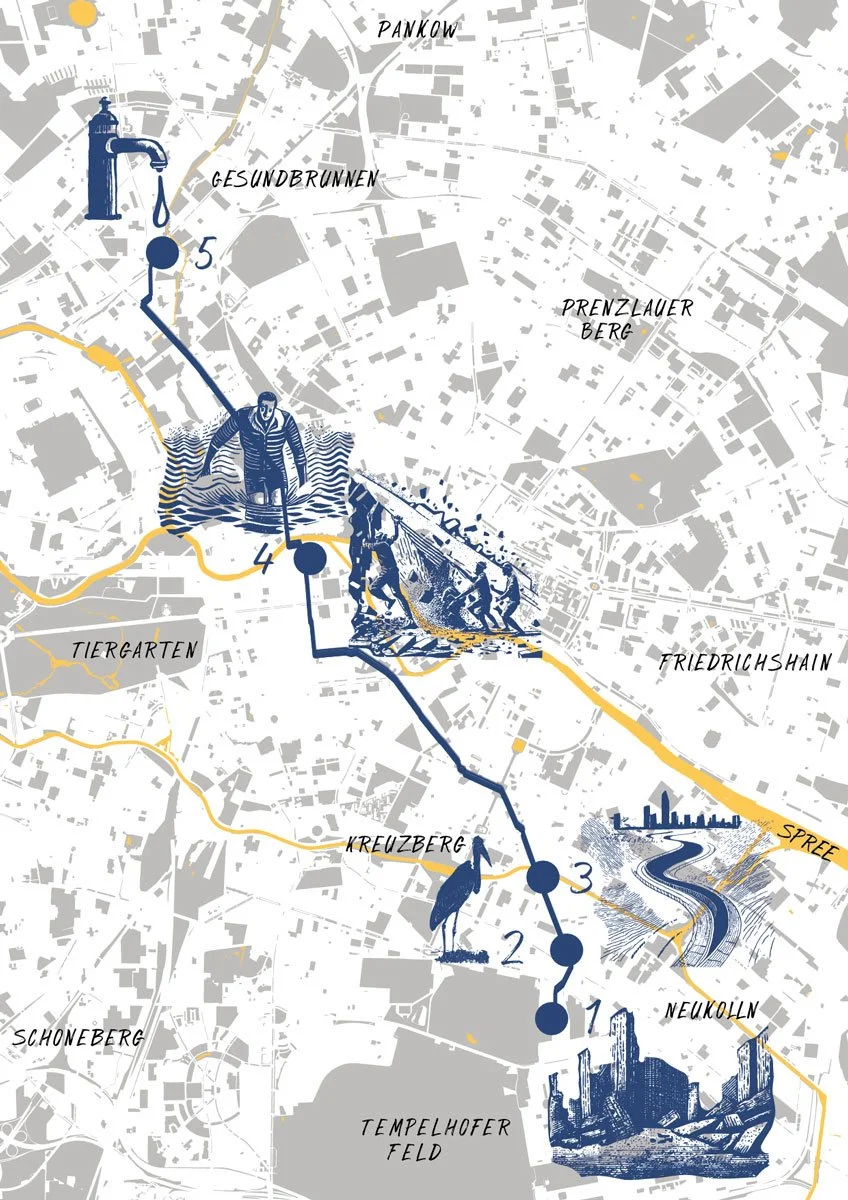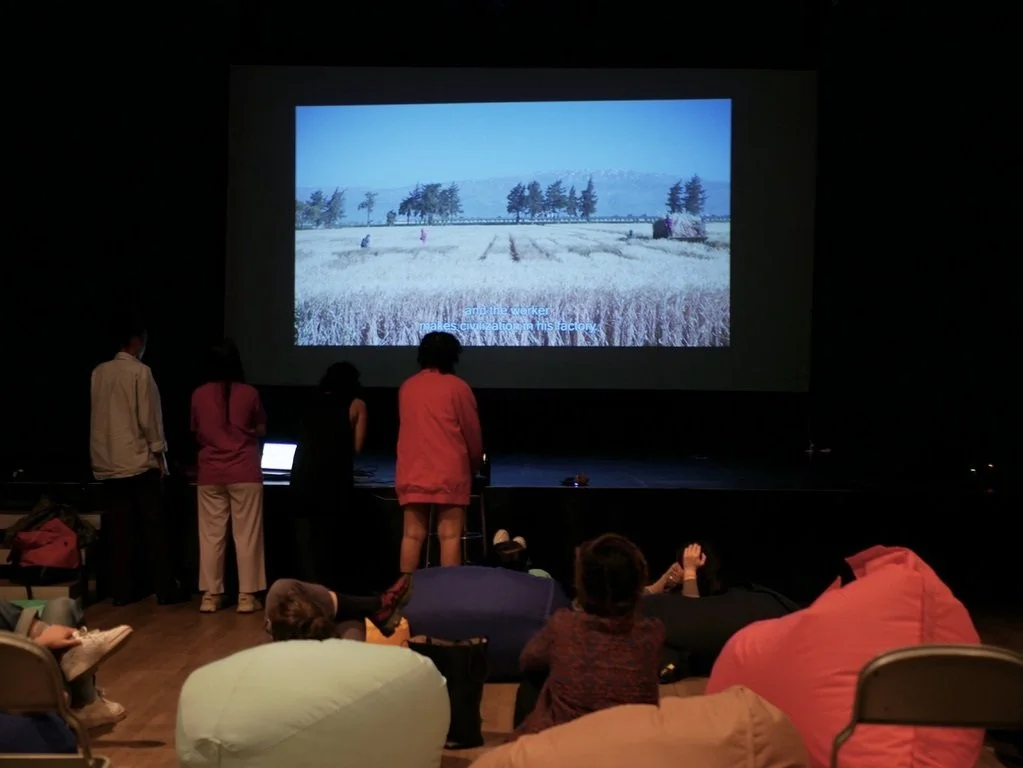That night when I left you on the bridge
I bent down
Kneeling on my knee
And pressed my ear to listen to the land
I bent down
Listening to the land
But all I heard was tongueless whispering
On my right hand was the sea behind the wall
The sea that hath no business in the forest
And I bent down
Listening to the land
And all I heard was tongueless whispering
As if some buried slave wanted to speak again
–Martin Carter
In the vast tapestry of ecological interconnectedness, our shared histories intricately intertwine across diverse geographies. They carry within them tales of complexity, resonating with the echoes of resistance and regenerative narratives. Within this intricate labyrinth, they urge us to reimagine our relationships that surround us.
The Listening to the Land project is a medium to transport the narratives of resistance and a regenerative future across borders and oceans. It encompasses creative, alternative methods and forms of revolutionary rebellion against the environmental degradation of ongoing colonial endeavours. Focusing on queer, feminist, postcolonial and indigenous artistic interventions, this interdisciplinary initiative creates a space for mutual learning, where hidden perspectives surface and transnational kinship is sought.
How can we imagine regenerative futures which center BIPOC narratives and alternative methodologies?
In what ways can decolonial perspectives and regenerative strategies be infused into artistic interventions, leaving a lasting imprint on social discourse?
How are intergenerational knowledge of the land, water and resources shared and used by local communities?
In the pursuit of engaging, learning, and taking action, what diverse and innovative regenerative solutions have emerged within local communities?
“Listening to the Land” started with the interdisciplinary response “Species, Soil and Successors” by Arijit Bhattacharyya, which envisioned a pluriversal, species-rich future beyond colonial paradigms. The project foregrounded intersectional approaches to climate justice, weaving together ecological, political, and epistemological inquiries. Alongside Bhattacharyya’s framework, the program included lecture performances, screenings, and critical discussions with contributors such as Hillside Projects, Devadeep Gupta, Julia Schuster, Lea Maria Wittich, and Nilanjan Bhattacharya, each offering distinct perspectives on the entanglements of land, ecology, and resistance. As an interdisciplinary initiative, encompassing performances, screenings, discussions, and community gatherings, the endeavor examines the environmental and cultural implications of the European Roller, a political history of the snail, fossil fuel and water degradation, offering a nuanced reflection on our present reality within the context of a disguised, dystopian order.
Amidst the currents that flow through the fluid arteries of Berlin, arises "Sea behind the Wall’, a participatory series that beckons all to embark on a collective journey. With an aim to untangle the complexities of neo-colonialism, it weaves an intersectional tapestry of solidarity, intermingling the intergenerational, indigenous, and contemporary modes of practices.
Sea Behind the Wall
A constellation of workshops and public actions that engaged the political ecologies of land, memory, and resistance. Through decolonial foraging and gardening sessions that challenge extractive agricultural logics, film screenings on land dispossession and environmental justice, and interventions led by Indigenous communities reclaiming sovereignty and ecological knowledge, and a street-side window exhibition through Berlin’s urban landscape, making visible the submerged histories and contested spatial politics.
A public intervention contextualising global issues within Berlin’s neighborhoods through an outdoor video exhibition format displayed in public spaces like shops and libraries. The exhibition explores socioeconomic, historical, and cultural contexts, addressing topics such as urbanization, water scarcity, bird endangerment, and river degradation.This initiative intricately integrates Berlin’s diverse neighborhoods Neukölln, Kreuzberg, Mitte, and Wedding each characterized by distinct living conditions, historical contexts, and urban infrastructure.
Harvesting Resilience
workshop series led by Zeren Oruc and Lea Nassim Tajbakhsh constituted a component of a research initiative centered around the intricate relationship between food, land, and culture. It delves into the ways in which we interact with our land, exploring the cultural and emotional ties we have to food based on its place of origin. The research investigates less extractive practices, including the fading knowledge of foraging, the role of food banks, community gardens, and other sustainable approaches.
A series of films that delves into the intricate dynamics of crop exchange between the global North and South. “The Price of Aid by Jihan El-tahri “ explore the multifaceted implications of aid programs and Wild Relatives by Jumana Mannaa follows the fascinating journey of seeds across continents.
“Lupa” in Tagalog primarily means land. In the Philippines, the term is laden with the complexities of private property and the enduring oppression experienced by sugarcane workers. The exploitative haciendaland system, inherited from Spanish colonization, persists today. Filipino artist Savannah Garcia curated responses of filmmakers spotlighting the diverse facets of post-colonialism, delving into its effects on the landscape and the laborers working in the fields.
Agri/Cultural Practices for Climate justice
is a series of workshops led by Mojisola Adebayo and Nicole Wolf offering an embodied introduction to agroecology principles and sustainable landscape design through games and exercises from Theatre of the Oppressed. Participants delve into the capacity of theater and artistic methods to confront environmental racism.
Electric Lies
explores the profound impact of modern energy generation on the indigenous Sámi lifestyles, culture, and their deeply rooted connection to nature.
The long term project draws attention to the transformation of traditional landscapes due to the presence of wind turbines and the consequential impact on reindeer herders It delves into the environmental consequences of coal and mineral mines as well as contentious construction projects that pose threats to traditional Sámi land and nature.Artists from the Nordic countries, Germany, Columbia converged in Berlin to raise awareness through public interventions, panel discussions, and workshops. The performance intervention čájet sámi vuoiŋŋa (showing Sámi Spirit)is the result of the residency to educate the audience about the socio-political situation in Sápmi conveys the important message about the challenges and resilience of the Sámi community.
This initiative is developed at Oyoun as part of the initiative DRAUSSENSTADT funded by Berliner Projektfonds Urbane Praxis as well as Senatsverwaltung für Kultur und Gesellschaflichen Zusammenhalt. Further funded by the Globus Opstart Programm of Nordisk Kulturfond




















